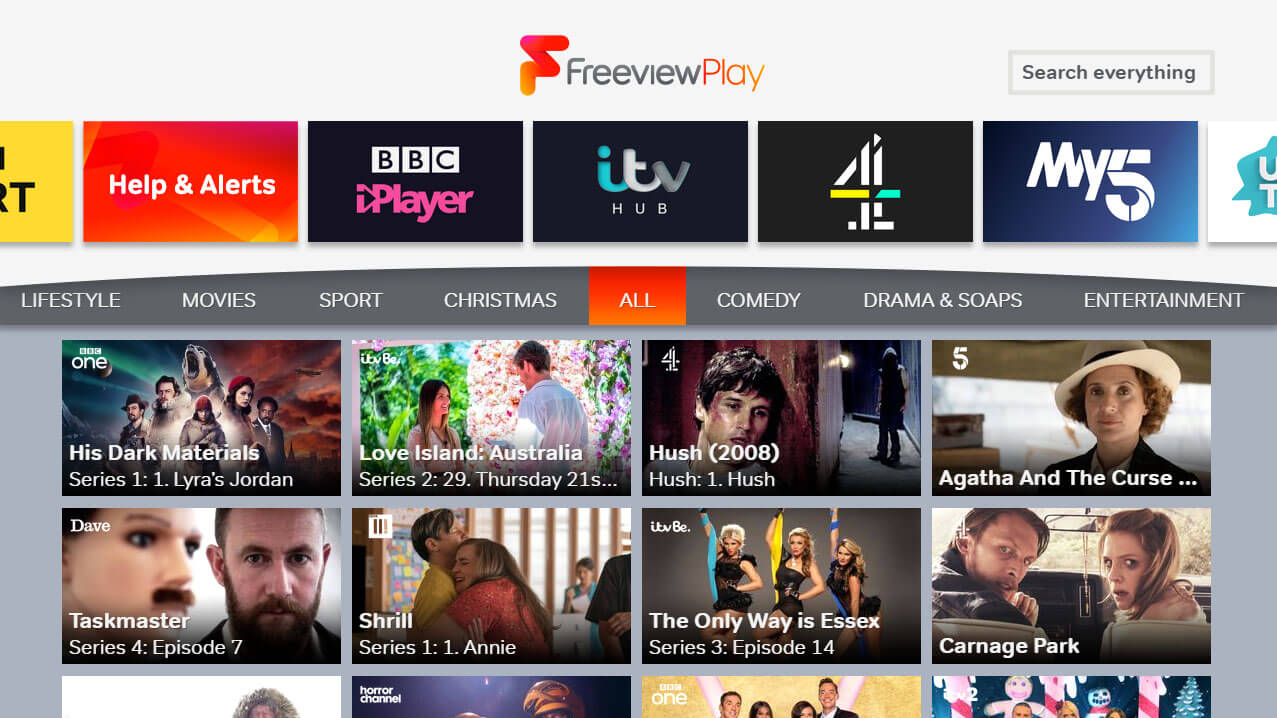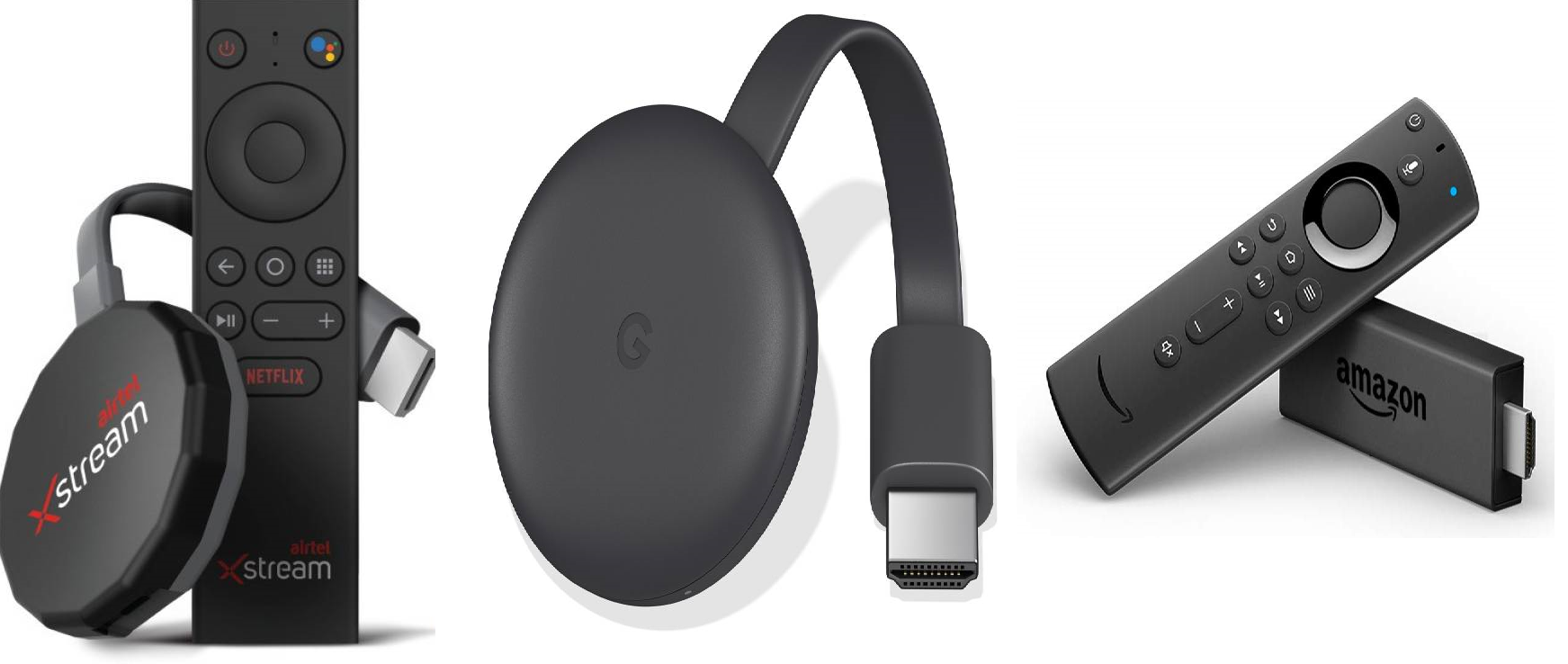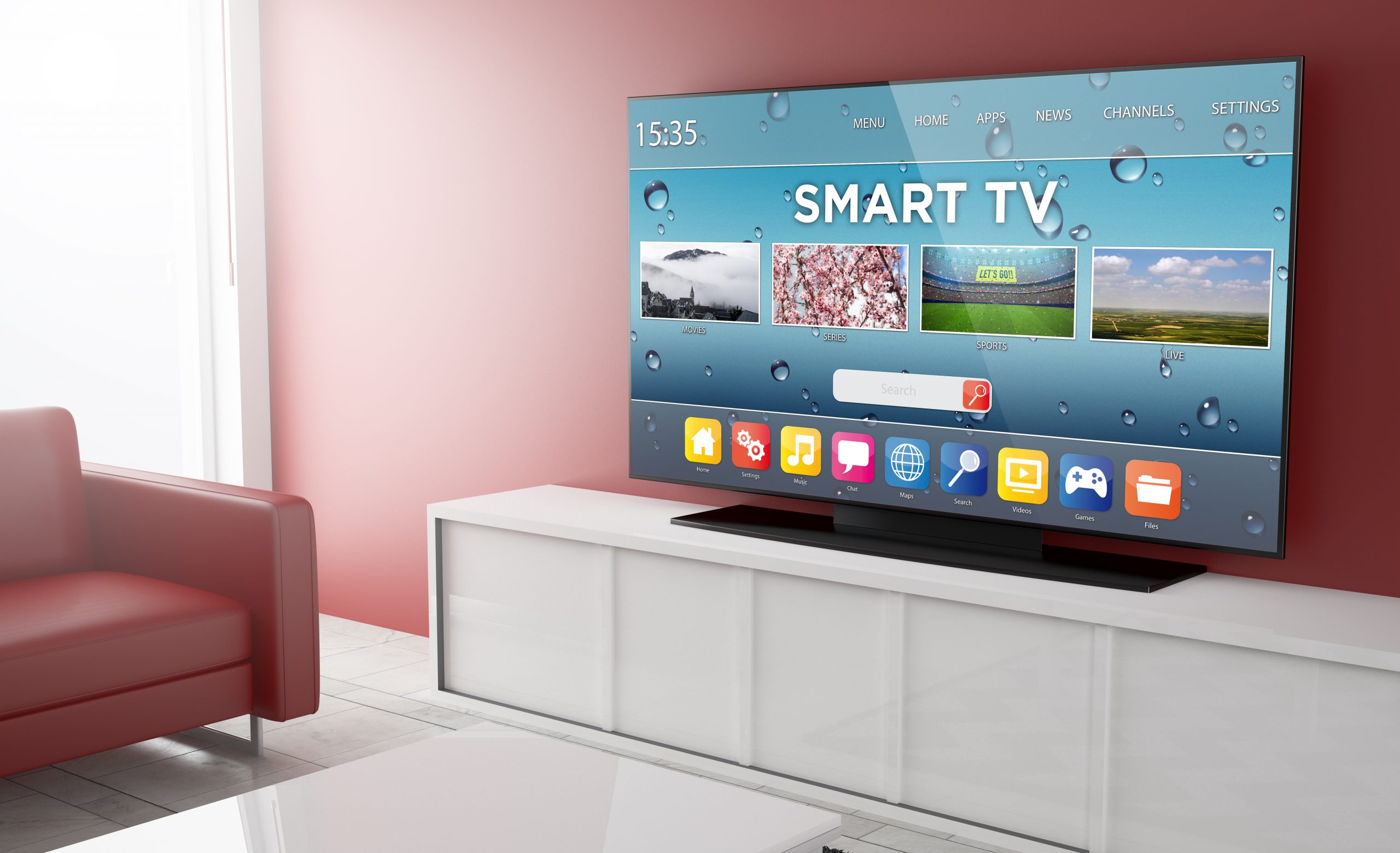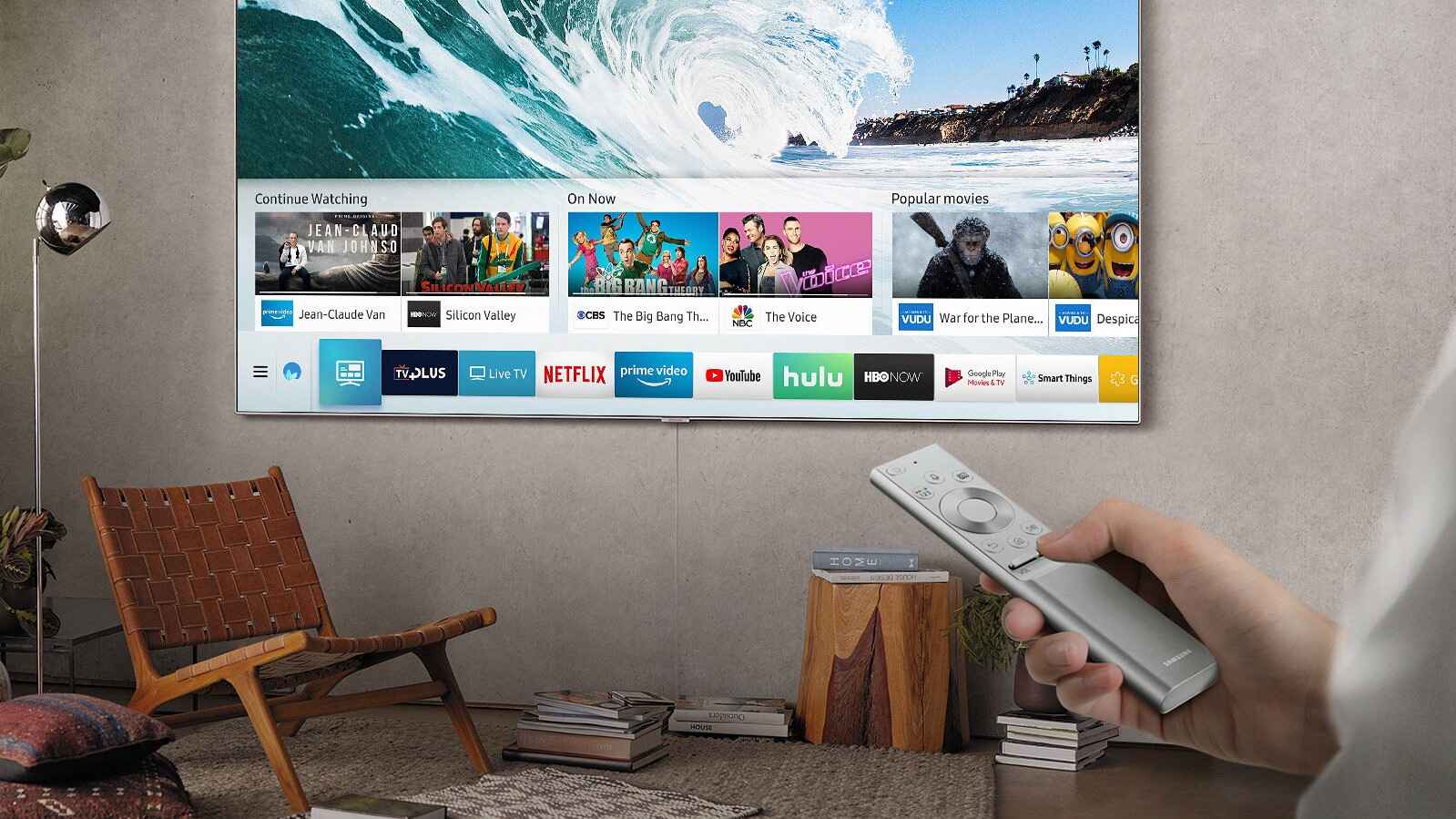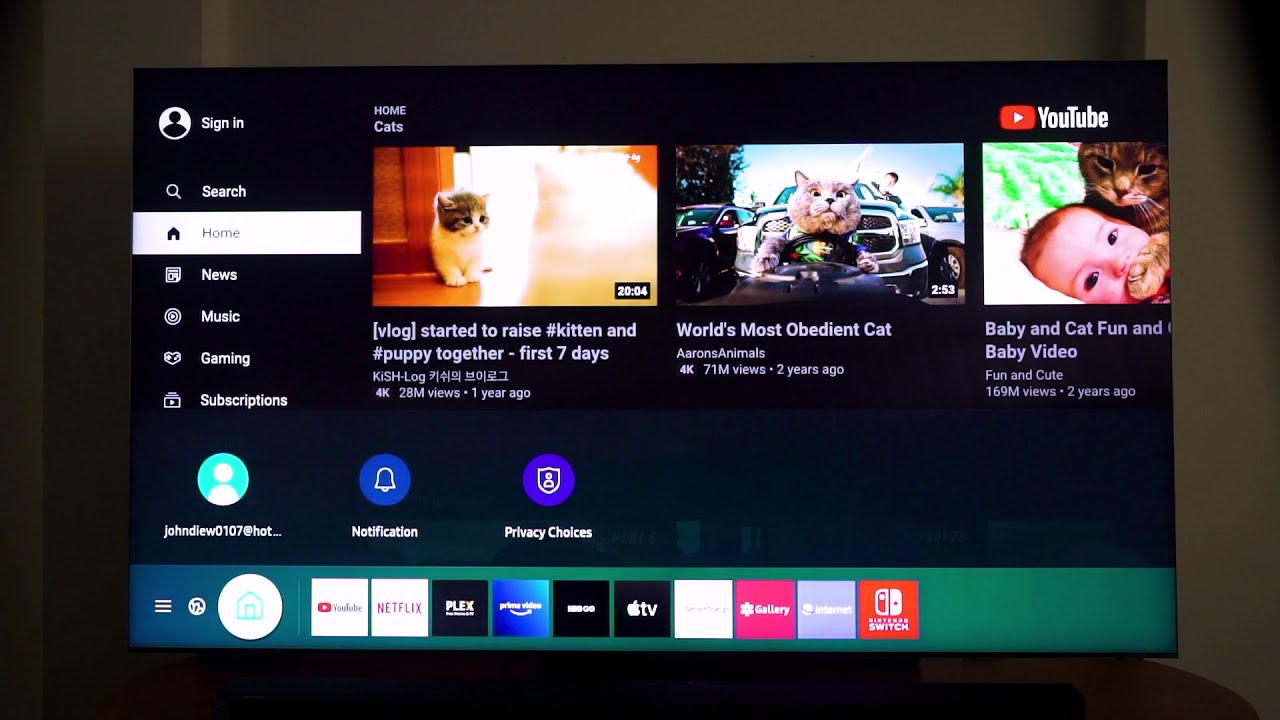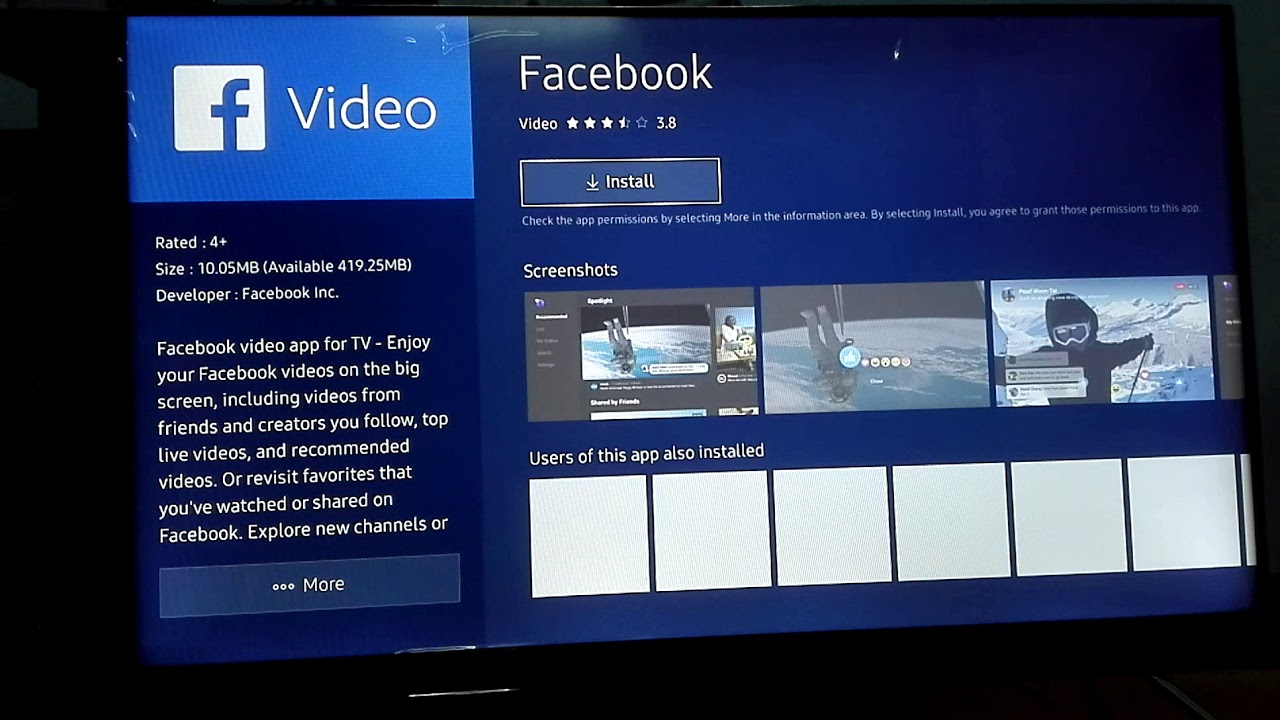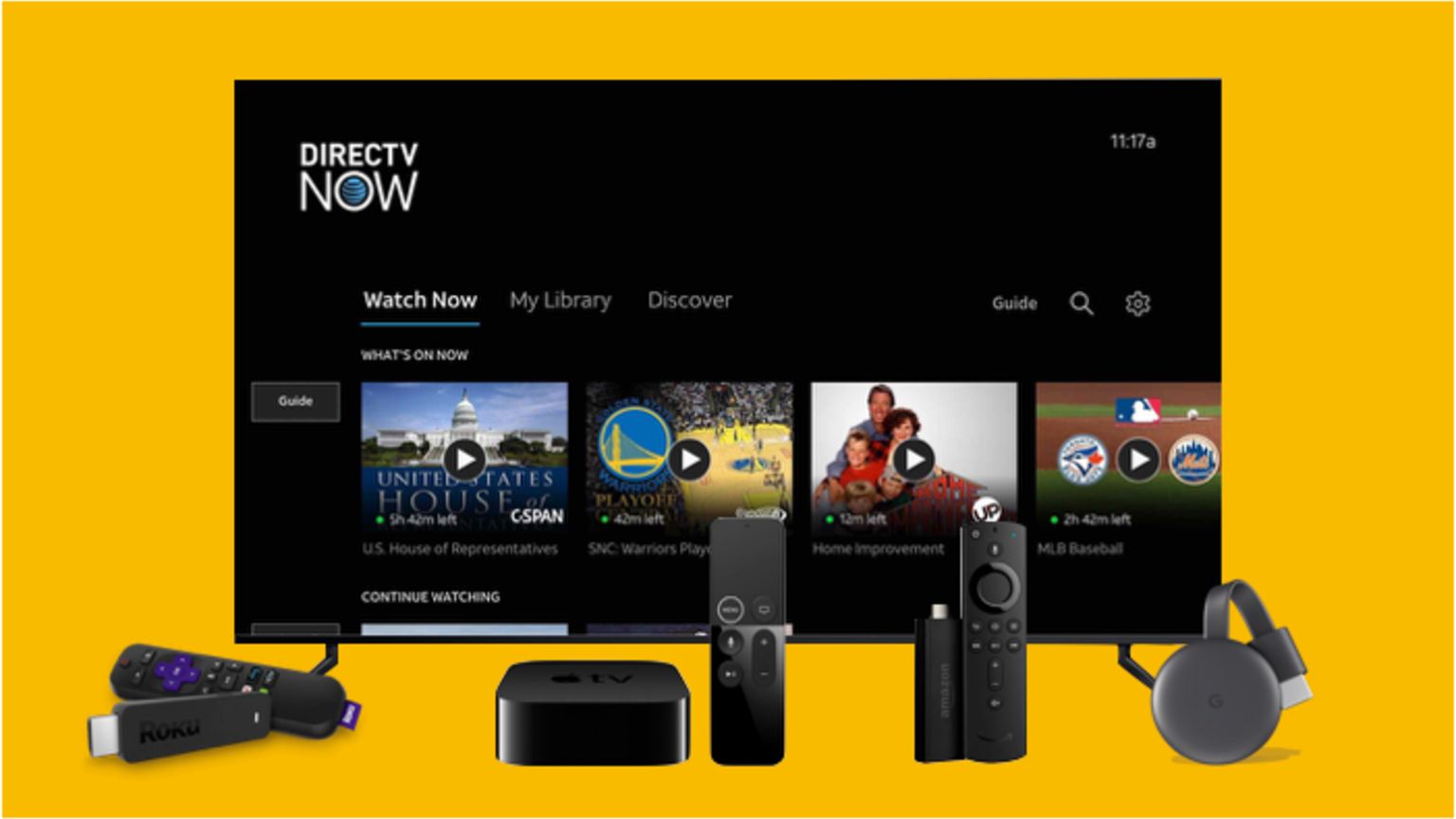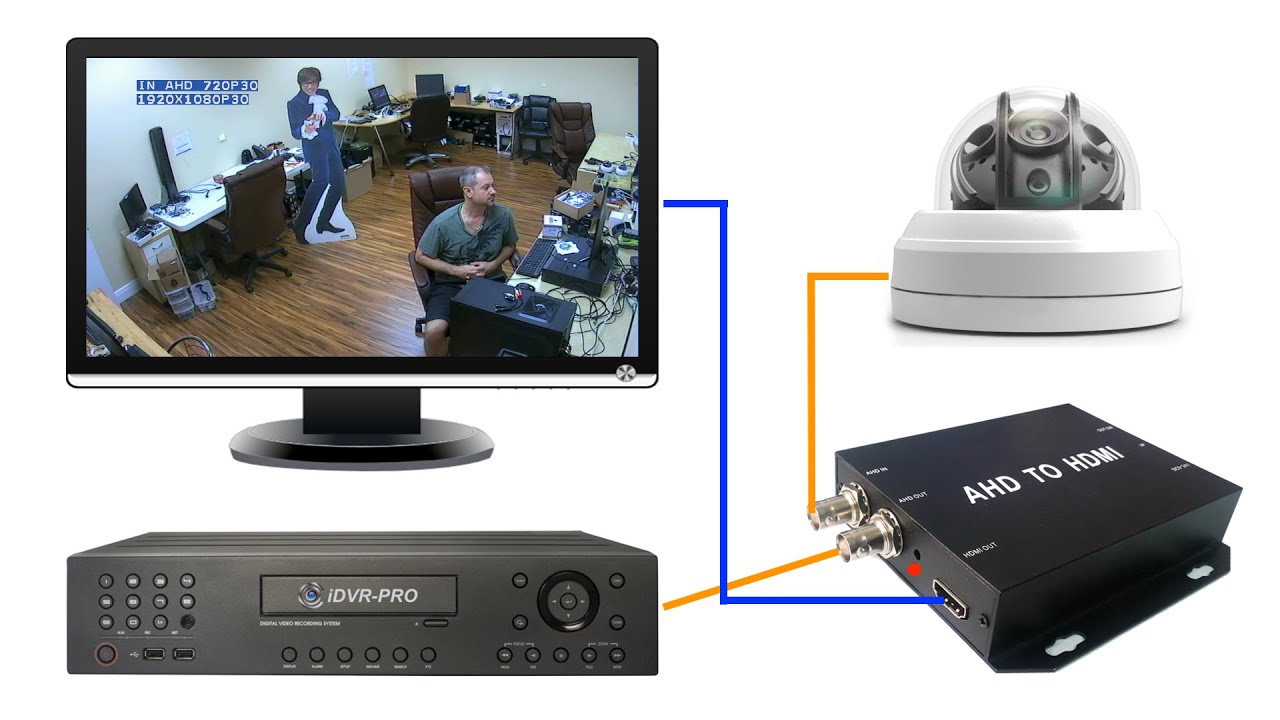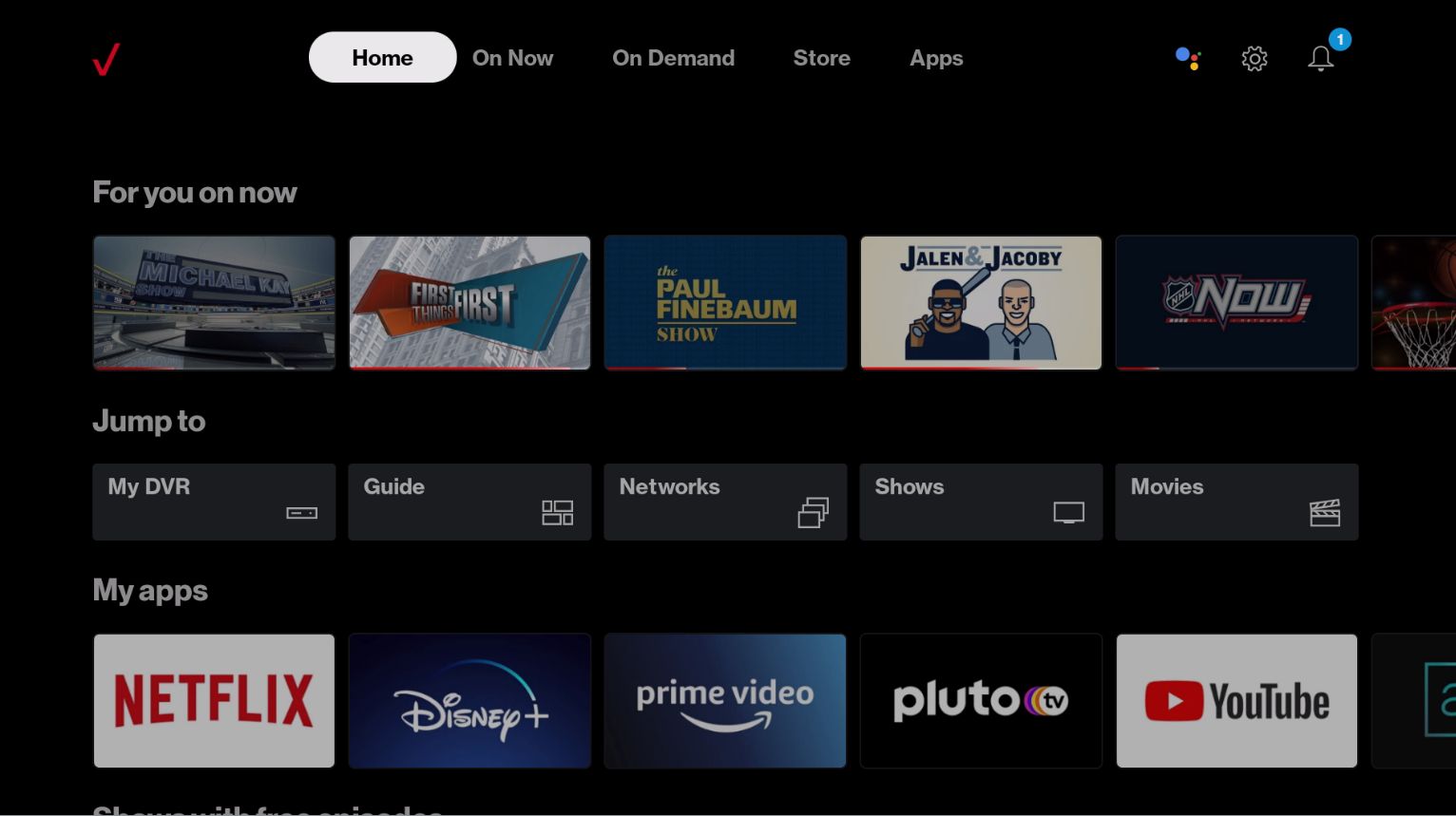Introduction
Welcome to the world of Smart TVs – the perfect blend of entertainment and technology. Gone are the days when televisions were restricted to simply displaying channels from a cable or satellite provider. With a Smart TV, you can explore a whole new realm of possibilities, from streaming your favorite movies and TV shows to browsing the internet and playing games.
In this article, we will guide you through the exciting journey of using a Smart TV. Whether you are a tech-savvy individual or just beginning to explore the world of streaming media, this guide will help you navigate the features and functions of your Smart TV.
Setting up a Smart TV may seem like a daunting task, but fear not – we will walk you through the process step by step. From connecting your television to the internet to understanding the intricacies of the remote control, we have got you covered. With this knowledge, you’ll be able to make the most out of your Smart TV experience.
Once your Smart TV is up and running, we will dive into the world of streaming apps and services. Discover popular platforms like Netflix, Amazon Prime Video, and Hulu that offer a vast library of movies and TV shows to binge-watch to your heart’s content. Learn how to navigate the user interface, customize your viewing preferences, and create personalized watchlists.
But what if you still enjoy watching live TV or have a cable subscription? Don’t worry – a Smart TV has you covered there as well. We will explore how you can seamlessly switch between streaming apps and traditional live television channels, ensuring that you never miss out on your favorite shows and sports events.
Do you want to share your favorite photos and videos on the big screen or mirror your phone’s display? Casting and screen mirroring are valuable features of Smart TVs that enable you to do just that. We will guide you through the process of connecting your mobile devices and streaming media from your phone or tablet directly to your television.
Finally, for all the gaming enthusiasts out there, Smart TVs offer exciting gaming options that will take your gaming experience to the next level. From casual games to console-quality titles, we will show you how to connect game controllers and explore the gaming capabilities of your Smart TV.
Of course, with any technology, there may be occasional troubleshooting involved. We will address common issues you may encounter and provide solutions to help you overcome them. From connectivity problems to software updates, we will assist you in keeping your Smart TV running smoothly.
So, get ready to embark on a journey into the world of Smart TVs. Grab your remote control, and let’s dive in!
Setting Up Your Smart TV
Setting up your Smart TV is the first step towards enjoying a world of digital entertainment. While the specific steps may vary depending on the brand and model of your television, the general process remains relatively similar. Follow these guidelines to ensure a smooth setup:
- Unboxing and Placement: Begin by carefully unboxing your Smart TV and removing any protective coverings. Find a suitable location for your TV, ensuring that it is placed on a stable surface and has proper ventilation. Consider the viewing angle and distance from your seating area for an optimal viewing experience.
- Power and Connections: Connect the power cable of your Smart TV to a power outlet. Next, connect any external devices such as cable boxes, gaming consoles, or sound systems using HDMI or other compatible cables. Make sure to follow the manufacturer’s instructions for proper cable connections.
- Internet Connectivity: To access the full features of your Smart TV, you need to connect it to the internet. Most Smart TVs offer both wired and wireless connectivity options. If you are using a wired connection, connect an Ethernet cable from your router to the TV. For a wireless connection, access the TV’s settings menu, select the Wi-Fi network you want to connect to, and enter the network password if required.
- Initial Setup: Turn on your Smart TV and follow the on-screen prompts to complete the initial setup. This typically involves selecting your preferred language, agreeing to the terms and conditions, and scanning for available channels. Some TVs may automatically detect and configure settings based on your location.
- Software Updates: After the initial setup, it is essential to ensure that your Smart TV has the latest software updates. Check for firmware updates in the settings menu or follow the instructions provided by the manufacturer to keep your TV up to date. Software updates often bring bug fixes, new features, and improved security.
- Account Setup: To access streaming apps and services, you may need to create accounts or sign in with existing ones. Follow the on-screen instructions to set up accounts for popular platforms like Netflix, Amazon Prime Video, or Hulu. Remember to keep your login credentials secure.
- Customization: Once your Smart TV is fully set up, take some time to customize the settings according to your preferences. Adjust display settings, such as brightness and contrast, to your desired levels. Explore the audio settings and connect external audio devices if necessary. You can also personalize the smart features, such as your favorite apps and the layout of the home screen.
By following these steps, you will have your Smart TV set up and ready to explore the world of entertainment at your fingertips. Now, let’s move on to the next section to learn how to connect your Smart TV to the internet and access a wealth of streaming content.
Connecting to the Internet
Connecting your Smart TV to the internet is an essential step in accessing the full range of features and content. Whether you prefer a wired or wireless connection, the process is straightforward and can be done in just a few steps:
- Wireless Connection: Most Smart TVs offer built-in Wi-Fi capabilities, allowing you to connect to your home wireless network. To begin, navigate to the settings menu on your TV using the remote control. Look for the network or Wi-Fi settings and select the option to scan for available networks. Your TV will display a list of detected networks. Choose your network from the list and enter the Wi-Fi password if prompted. Once connected, your Smart TV will have access to the internet.
- Wired Connection: If you prefer a more stable and reliable internet connection, you can use an Ethernet cable to connect your Smart TV directly to your router. Locate the Ethernet port on the back of your TV and insert one end of the cable into the port. The other end of the cable should be connected to an available Ethernet port on your router. Once the connection is established, your Smart TV will be connected to the internet with a wired connection.
- Network Troubleshooting: In some cases, you may encounter difficulties connecting your Smart TV to your home network. Here are a few troubleshooting tips to help resolve common issues:
- Ensure that your Wi-Fi router is functioning properly and that other devices can connect to it without any issues.
- Move your Smart TV closer to the router if the signal strength is weak. Alternatively, you can use Wi-Fi range extenders or repeaters to boost the signal strength.
- Check if your network is using MAC address filtering. If so, you need to add your Smart TV’s MAC address to the allowed devices list in your router’s settings.
- Restart both your Smart TV and router to refresh the network connections.
Once your Smart TV is successfully connected to the internet, you can start exploring a wide range of streaming apps, browsing the web, and enjoying online content. The internet connectivity opens up a world of entertainment options, allowing you to stream your favorite movies and TV shows, access online video platforms, play games, and much more.
Now that your Smart TV is connected to the internet, let’s move on to the next section to learn how to navigate the smart TV interface and make the most out of its features.
Using the Smart TV Remote Control
The Smart TV remote control is your gateway to a world of entertainment. Although each brand and model of Smart TV may have a slightly different remote control layout, the basic functions remain consistent. Here’s a guide to using a typical Smart TV remote:
- Power On/Off: The power button is usually located at the top or bottom of the remote. Press it to turn the Smart TV on or off.
- Navigation Buttons: These directional buttons, usually positioned in the center of the remote, allow you to navigate through menus, scroll through lists, and select options.
- OK/Select Button: The OK or select button is usually located at the center of the directional buttons. Press this button to confirm your selection or open a highlighted option.
- Menu Button: The menu button, typically represented by an icon with three horizontal lines, opens the main menu of your Smart TV. From there, you can access various settings, apps, and features.
- Home Button: The home button, usually represented by a house icon, takes you directly to the home screen of your Smart TV. This is where you can find quick access to apps, settings, and recommended content.
- Back Button: The back button allows you to navigate back to the previous screen or menu.
- Volume and Channel Buttons: These buttons control the volume level and channel selection. Use the volume up and down buttons to adjust the audio level, and the channel up and down buttons to switch between channels.
- Input/Button: The input or source button lets you switch between different input sources, such as HDMI, cable/satellite, or USB. This is useful when connecting external devices to your Smart TV.
- Smart Functions: Many remote controls feature dedicated buttons for specific smart functions. These buttons vary based on the manufacturer and may include shortcuts for streaming apps, screen mirroring, voice control, and more.
With the remote control in your hands, you have full control over your Smart TV. Navigate through the smart TV menus, access your favorite apps, adjust the settings, and enjoy an immersive entertainment experience from the comfort of your couch.
Now that you are familiar with the remote control, it’s time to delve into the next section to learn how to navigate the Smart TV interface and discover the multitude of streaming apps and services available to you.
Navigating the Smart TV Interface
The Smart TV interface serves as your gateway to an array of entertainment options. It allows you to navigate through different menus, access streaming apps, adjust settings, and discover new content. While the exact interface may vary between TV brands and models, the fundamental concepts remain consistent. Here’s a general guide on how to navigate the Smart TV interface:
- Home Screen: When you turn on your Smart TV or press the home button on the remote control, you will be greeted with the home screen. This serves as the hub of your Smart TV experience and provides quick access to various features and apps.
- Main Menu: From the home screen, you can navigate to the main menu. This menu typically displays different categories such as apps, settings, inputs, and more. Use the remote control’s directional buttons to move through the menu options and press the select or OK button to enter a chosen category.
- Apps: The apps section is where you can access a variety of streaming services, such as Netflix, Hulu, Amazon Prime Video, YouTube, and more. Browse the available apps, and select one to launch it. Some Smart TVs allow you to download additional apps from an app store.
- Settings: In the settings menu, you can customize various aspects of your Smart TV, including display settings, audio preferences, network settings, and more. Adjust the settings according to your preferences to optimize your viewing experience.
- Recommended Content: Many Smart TVs offer a personalized recommendation feature based on your viewing habits. This section suggests movies, TV shows, or apps that you might enjoy based on your previous selections. Explore these recommendations to discover new content.
- Search Functionality: Smart TVs often have a search feature that allows you to quickly find specific content. Use the on-screen keyboard or voice search option to search for movies, TV shows, actors, or genres and get instant results.
- Customization: Depending on your Smart TV’s capabilities, you may have the option to customize the home screen layout, rearrange app icons, or create shortcuts. This enables you to tailor the interface to your preferences, making it more intuitive and convenient for your usage.
Exploring the Smart TV interface is an exciting adventure that allows you to discover an abundance of content and customize your entertainment experience. Take some time to familiarize yourself with the interface and its various features, ensuring that you can easily navigate through menus, find your favorite apps, and immerse yourself in a world of entertainment.
Now that you have learned how to navigate the Smart TV interface, let’s move on to the next section to explore popular streaming apps and services that you can enjoy on your Smart TV.
Streaming Apps and Services
Streaming apps and services are the heart and soul of a Smart TV, offering a vast library of movies, TV shows, documentaries, and more. With a wide range of options available, you can find content to suit every taste and interest. Here’s a glimpse into the world of streaming apps and services on your Smart TV:
1. Netflix: Netflix is one of the most popular streaming services that offers a vast collection of movies, TV shows, and documentaries. From critically acclaimed originals to beloved classics, Netflix has something for everyone. With a user-friendly interface, you can easily explore different genres and create personalized watchlists.
2. Amazon Prime Video: Amazon Prime Video provides a diverse selection of movies, TV series, and exclusive original content. With the ability to rent or buy movies and subscribe to various channels, such as HBO or Showtime, Amazon Prime Video offers a comprehensive streaming experience. Prime members also have access to additional benefits, including free and fast shipping on eligible items.
3. Hulu: Hulu is known for its extensive collection of current and classic TV shows, offering next-day streaming of many popular series. With a mix of original programming and content from various network partners, Hulu is perfect for those who want to catch up on their favorite TV shows and discover new series.
4. Disney+: Disney+ is a must-have for fans of Disney, Pixar, Marvel, Star Wars, and National Geographic. With a vast library of animated classics, beloved franchises, and original content, Disney+ brings the magic of Disney straight to your Smart TV.
5. YouTube: YouTube is a treasure trove of user-generated and professional content. From music videos to vlogs, tutorials, and live streams, YouTube offers an endless array of entertainment options. Explore channels related to your interests, subscribe to your favorite creators, and discover a world of video content.
6. HBO Max: HBO Max is a premium streaming service that provides access to HBO original shows, blockbuster movies, and exclusive Max originals. From critically acclaimed dramas to comedy specials and captivating documentaries, HBO Max is the go-to destination for high-quality content.
7. Other Streaming Apps: In addition to the mentioned platforms, your Smart TV may offer a range of other streaming apps and services. This can include platforms like Hulu Live TV, Sling TV, YouTube TV, and more, which offer live TV channels alongside on-demand content.
With these streaming apps and services at your fingertips, your Smart TV becomes a powerhouse of entertainment possibilities. Dive into the world of your favorite movies, binge-watch TV series, or explore new genres and documentaries—all from the comfort of your living room.
Now, let’s move on to the next section to discover how you can watch live TV and cable on your Smart TV.
Watching Live TV and Cable
Despite the rise of streaming services, many people still enjoy watching live TV and cable programming. Thankfully, with a Smart TV, you can seamlessly integrate live TV and cable channels into your viewing experience. Here’s how:
1. Antenna/Cable Connection: If you receive your TV signal through an antenna or cable, connect it to your Smart TV. The specific connections may vary depending on your TV model, but generally, you need to connect the coaxial cable from your antenna or cable box to the corresponding port on your TV. Once the connection is made, follow the on-screen prompts to scan for available channels.
2. Digital Tuner: Smart TVs equipped with a built-in digital tuner (ATSC or QAM) can receive over-the-air digital broadcasts without the need for an additional antenna. Simply connect the coaxial cable from your cable provider directly to your Smart TV, and use the TV’s tuner to scan and access the available cable channels.
3. Set-Top Box: If you have a cable or satellite TV subscription, you can connect your set-top box to your Smart TV via HDMI. This allows you to access your cable or satellite channels directly through the set-top box. Use the input/source button on your remote control to switch to the correct HDMI input and control the set-top box with its respective remote control.
4. Live TV Apps: Many Smart TVs come pre-loaded with live TV apps that provide access to a variety of streaming channels. These apps may offer live news, sports, and other specialized content. Examples of such apps include Sling TV, Hulu Live TV, YouTube TV, and AT&T TV. Check your Smart TV’s app store or recommended apps section to see what live TV options are available.
5. Electronic Program Guide (EPG): Smart TVs often feature an electronic program guide that displays the schedule of available channels and programs. Use the remote control to navigate through the EPG, select a program you want to watch, and press the OK or select button to start viewing.
6. PVR/DVR Functionality: Some Smart TVs offer PVR (personal video recorder) or DVR (digital video recorder) functionality. This allows you to record live TV programs and watch them at your convenience. Check your TV’s user manual or settings menu for instructions on how to set up and use this feature.
By incorporating live TV and cable functionality into your Smart TV setup, you can enjoy the best of both worlds. Seamlessly switch between streaming apps and your favorite cable channels, ensuring that you never miss out on live sports events, news updates, or your preferred TV shows.
Now that you know how to watch live TV and cable on your Smart TV, let’s move on to the next section to explore how you can cast and screen mirror from your mobile devices.
Casting and Screen Mirroring
One of the key advantages of a Smart TV is its ability to cast or screen mirror content from your mobile devices onto the larger screen. Whether it’s photos, videos, or even entire apps, casting and screen mirroring enhance your viewing experience. Here’s how you can utilize these features on your Smart TV:
1. Casting: Casting refers to wirelessly streaming content from your smartphone or tablet to your Smart TV. To begin, ensure that both your mobile device and Smart TV are connected to the same Wi-Fi network. Open a compatible casting app, such as YouTube, Netflix, or Spotify, on your mobile device. Look for the cast icon within the app (usually represented by a screen with Wi-Fi signal bars) and tap on it. Select your Smart TV from the list of available devices, and the content will start playing on your TV while your mobile device acts as the remote control.
2. Screen Mirroring: Screen mirroring allows you to display the entire screen of your mobile device on your Smart TV. Again, ensure that your mobile device and Smart TV are connected to the same Wi-Fi network. On most devices, you can enable screen mirroring by accessing the settings menu and selecting the screen mirroring option. On your Smart TV, navigate to the screen mirroring or cast menu and select your mobile device from the list. The screen of your mobile device will be mirrored on your TV, allowing you to view apps, play games, or share content with others on the big screen.
3. Compatibility and Apps: Casting and screen mirroring functionalities may vary depending on the brand and model of your Smart TV. Some TVs support built-in casting and screen mirroring technology, while others require the use of compatible apps or devices, such as Chromecast or Apple AirPlay, to enable these features. Check your Smart TV’s user manual or settings menu for specific instructions and compatibility details.
4. Audio and Video Quality: When casting or screen mirroring, it’s important to consider the audio and video quality. Some apps and devices support higher quality streaming, such as Full HD (1080p) or even 4K resolution. However, the quality may depend on the strength and speed of your Wi-Fi network. For the best experience, ensure a stable internet connection and select the highest quality settings available.
Casting and screen mirroring open up a world of possibilities, allowing you to enjoy your favorite content from your mobile devices on the big screen of your Smart TV. Whether you want to share photos and videos with family and friends, stream music, or play mobile games with a larger view, these features provide a seamless and immersive experience.
Now, let’s move on to the next section, where we’ll explore the gaming capabilities of your Smart TV.
Gaming on Your Smart TV
Gaming on a Smart TV opens up a whole new world of entertainment, allowing you to enjoy console-quality gaming experiences on the big screen. Whether you’re a casual gamer looking for some fun or a dedicated gamer seeking immersive gameplay, your Smart TV can provide diverse gaming options. Here’s how you can enhance your gaming experience:
1. Game Apps: Many Smart TVs come with built-in gaming apps, providing a selection of casual games that you can play using your remote control or smartphone as a controller. These games are usually simple and accessible to players of all ages.
2. Console Gaming: If you’re a console gamer, connecting your gaming console, such as PlayStation, Xbox, or Nintendo Switch, to your Smart TV is a breeze. Simply use an HDMI cable to connect the console to one of the HDMI ports on your TV. Switch to the relevant input source using your remote control, and you’re ready to play your favorite console games on the super-sized screen.
3. Game Streaming: Some Smart TVs offer game streaming services, allowing you to stream games directly to your TV without the need for a dedicated gaming console. Platforms like Google Stadia, Nvidia GeForce Now, and Xbox Game Pass Ultimate provide access to a wide range of high-quality games that you can stream and play immediately without the need for physical game discs or downloads.
4. Game Controllers: To enhance your gaming experience, consider using a dedicated game controller instead of relying solely on the TV remote or smartphone. Many Smart TVs support Bluetooth or USB controllers, allowing you to connect popular gamepads such as PlayStation DualShock, Xbox One, or Nintendo Switch Pro controllers to your Smart TV for a more comfortable and immersive gaming session.
5. Gaming Features: Smart TVs often offer additional gaming features to enhance your gameplay. These features can include low latency (game mode) settings to reduce video lag, features for optimizing visuals for gaming, and even syncing with popular gaming accessories or platforms.
6. Online Multiplayer: Take advantage of your Smart TV’s internet connectivity to engage in online multiplayer gaming. Depending on the game and platform, you can play with friends and gamers from around the world, competing in multiplayer matches or collaborating on exciting quests.
With gaming options ranging from casual to console-quality experiences, your Smart TV can provide countless hours of gaming enjoyment. Immerse yourself in stunning visuals, captivating storytelling, and competitive gameplay, all from the comfort of your living room.
Now that you’re equipped with the knowledge to enhance your gaming experience, let’s move on to the next section, where we’ll explore common troubleshooting issues and their solutions for your Smart TV.
Troubleshooting Common Issues
While Smart TVs offer a wealth of entertainment options, occasional technical issues may arise. Here are some common issues that you may encounter with your Smart TV and their potential solutions:
1. Connectivity Problems: If your Smart TV is having trouble connecting to the internet, ensure that your Wi-Fi network is working properly. Restart your router and TV, and double-check that you are entering the correct Wi-Fi password. If using a wired connection, ensure that the Ethernet cable is securely connected to both the TV and the router. If the problem persists, consider moving the TV closer to the router or using a Wi-Fi extender to boost the signal strength.
2. App Issues: If apps are not working correctly on your Smart TV, try closing and reopening the app. Clear the cache of the app or uninstall and reinstall it if necessary. Additionally, make sure that your Smart TV’s firmware and the apps themselves are up to date. Regularly check for firmware updates in the TV’s settings menu or visit the manufacturer’s support website for the latest software versions.
3. Remote Control Problems: If your Smart TV remote control is not functioning properly, replace the batteries and ensure that there are no obstructions between the remote and TV. If the remote still doesn’t work, try resetting it by removing the batteries and pressing all of the buttons for a few seconds. After that, reinsert the batteries and try again. If the issue persists, you may need to purchase a new remote control or consider using a universal remote compatible with your Smart TV.
4. Display Issues: If you experience display problems, such as a distorted picture, black screen, or incorrect resolution, first ensure that all cables are properly connected. Check that the HDMI or other video cables are securely plugged into both the Smart TV and the external device. If the problem persists, try changing the display settings on your TV, such as adjusting the resolution or aspect ratio. Consulting the TV’s user manual or contacting customer support may provide additional troubleshooting steps specific to your TV model.
5. Audio Problems: If you encounter audio issues, such as no sound or poor sound quality, check the volume settings on your Smart TV and external audio devices, if connected. Ensure that the audio cables are properly connected and that the correct audio output is selected in the TV’s settings menu. If using external speakers or sound systems, confirm that they are powered on and functioning correctly. Adjusting the equalizer settings on your TV or audio device may also improve sound quality.
6. Streaming Buffering: If you experience buffering or playback issues while streaming content, check your internet connection speed to ensure it meets the minimum requirements for streaming. Consider upgrading your internet service or connecting your Smart TV directly to your router via an Ethernet cable for a more stable connection. Additionally, closing unnecessary apps or devices that may be using the internet can optimize streaming performance.
If you encounter any other issues with your Smart TV that are not covered here, consult the user manual or support resources provided by the TV manufacturer. They can offer specific troubleshooting advice based on your TV model.
By addressing common issues as they arise, you can enjoy a seamless and uninterrupted Smart TV experience. With troubleshooting knowledge at hand, you’ll be able to overcome any technical challenges and fully enjoy the world of entertainment your Smart TV has to offer.
Now that you’re prepared to troubleshoot common issues, let’s wrap up this guide and reflect on the rich entertainment possibilities your Smart TV can provide.
Conclusion
Congratulations! You have now become familiar with the various aspects of using a Smart TV. From setting up your TV and connecting it to the internet, to navigating the interface, accessing streaming apps and services, watching live TV, casting and screen mirroring, gaming, and troubleshooting common issues, you are equipped with the knowledge to make the most of your Smart TV experience.
With a Smart TV, you have a world of entertainment at your fingertips. Whether you want to binge-watch your favorite TV shows and movies, explore new streaming platforms, play games, or enjoy live TV channels, your Smart TV provides a versatile and immersive entertainment experience.
Remember, customization is key. Take the time to personalize your Smart TV, adjusting settings, creating watchlists, and organizing apps to suit your preferences and make navigation seamless.
Lastly, stay up to date with firmware updates and explore new features as they become available. Technology continues to advance, and firmware updates often bring enhancements, bug fixes, and new functionalities to your Smart TV.
So, grab your Smart TV remote control, sit back, and embark on an exciting journey of entertainment. Whether you’re snuggled up with loved ones for a movie night, exploring new series, or immersing yourself in a captivating gaming experience, your Smart TV is there to elevate your entertainment possibilities.
Enjoy the convenience, versatility, and sheer fun that a Smart TV brings to your home, and let the world of digital entertainment unfold before your eyes!







